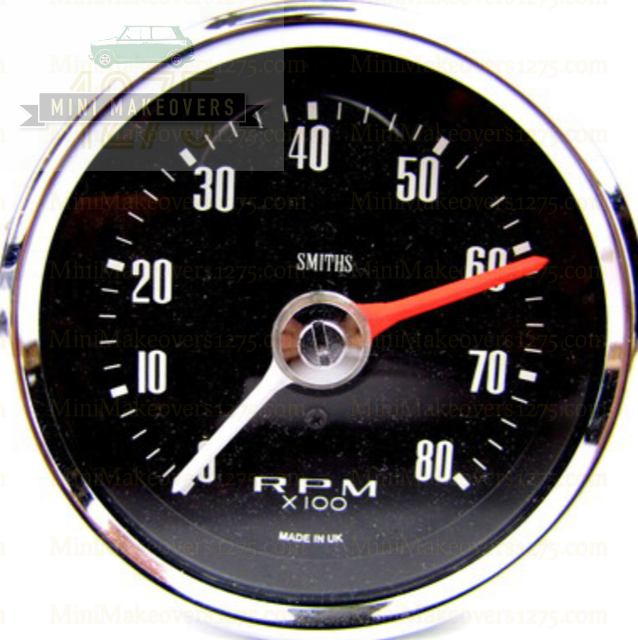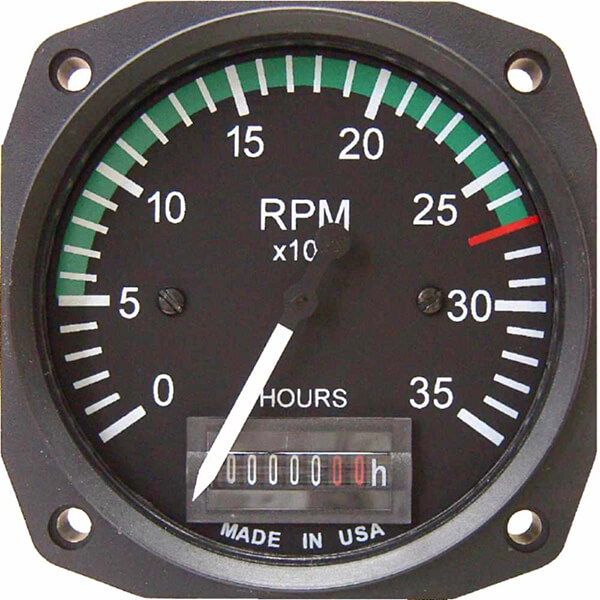How a Tachometer Assists Display Engine Health and Efficiency
How a Tachometer Assists Display Engine Health and Efficiency
Blog Article
The Importance of a Tachometer in Monitoring Engine Rate and Performance in Automotive Applications
In the world of automobile engineering, the tachometer stands as an essential tool in the chauffeur's toolbox, providing a straight home window right into the inner functions of an automobile's engine. Beyond its feature as a simple scale of revolutions per min (RPM), the tachometer serves as a crucial tool for fanatics and professionals alike, offering real-time understandings into engine efficiency and health.
Significance of Monitoring Engine RPM
Monitoring engine RPM, or revolutions per minute, is a vital facet of vehicle maintenance and performance assessment. Engine RPM straight correlates with the speed at which the engine's crankshaft turns, showing how swiftly the engine is running - tachometer. By keeping track of RPM, technicians can evaluate the health and wellness of the engine, identify potential concerns, and fine-tune efficiency. An irregular RPM reading might signify problems such as engine misfires, faulty ignition system, or issues with the fuel shipment system. Consistently high RPM readings might suggest hostile driving behaviors or the demand for a greater equipment change to enhance fuel efficiency.
In addition, keeping track of engine RPM is essential for efficiency examination in auto racing and high-performance lorries. Maintaining ideal RPM levels is crucial for achieving peak power outcome and acceleration. Racers often use tachometers to ensure they are operating within the optimal RPM variety for optimum performance. In recap, checking engine RPM is not only vital for detecting problems but additionally for maximizing engine efficiency in various vehicle applications.

Advantages of Real-Time Information
In automobile applications, real-time data plays a critical duty in giving immediate understandings into the efficiency and problem of the car. By continually keeping an eye on numerous criteria such as engine rate, temperature, fuel consumption, and much more, real-time information supplies various advantages that add to enhanced efficiency and security on the road.
One considerable advantage of real-time information is its capability to alert drivers and service technicians to any type of anomalies or concerns promptly. This positive approach enables fast identification of possible troubles, enabling for timely treatments to avoid additional damage or malfunctions. Additionally, real-time data promotes performance optimization by providing instant responses on driving habits and engine performance. Chauffeurs can change their actions in real-time based on this information to accomplish far better gas economic climate and prolong the lifespan of their lorry.

Additionally, real-time data plays an important function in modern automobile diagnostics, enabling service technicians to promptly diagnose and attend to malfunctions. This results in lowered downtime, lower maintenance expenses, and ultimately, enhanced overall their website automobile integrity and long life (tachometer). By taking advantage of the power of real-time data, automotive stakeholders can make informed choices that positively affect both the efficiency and longevity of the car
Influence On Equipment Shifts
Reliable gear changes in vehicle applications considerably influence overall efficiency and driving experience. The tachometer plays an important function in enhancing equipment shifts by giving real-time engine rate data to the vehicle driver. When approaching the redline on the tachometer, it signals the vehicle driver to upshift to avoid over-revving the engine and creating potential damages. On the various other hand, downshifting at the best moment can aid maintain the engine in its power band, guaranteeing receptive velocity when required.
Furthermore, the tachometer aids in accomplishing smoother equipment shifts, particularly in hands-on transmissions. By monitoring engine speed, drivers can carry out gear changes at the ideal RPM variety, minimizing snagging movements and decreasing wear on the transmission components. This precision on duty changes not just improves driving comfort but likewise contributes to sustain efficiency.
Enhancing Gas Effectiveness
Given the vital function the tachometer plays in optimizing gear changes for efficiency and engine wellness, it straight contributes to maximizing gas performance in auto applications. By providing real-time comments on engine rate, the tachometer helps chauffeurs in preserving the most reliable RPM range for gas economic climate. When vehicle drivers regularly check the tachometer and change their driving routines as necessary, they can avoid unneeded fuel usage brought on by over-revving or hauling the engine.
Moreover, the tachometer helps drivers recognize the most fuel-efficient gear to be in at any given minute, stopping the engine from working more difficult than needed. This is particularly vital throughout velocity and travelling, where being in the right gear can dramatically influence fuel effectiveness. Furthermore, the tachometer can inform motorists to potential mechanical problems that could be adversely impacting fuel economic climate, such as a slipping clutch or a blocked air filter. Finally, the tachometer acts as a valuable device in boosting fuel performance by advertising ideal driving habits and identifying areas for enhancement in the car's performance.

Taking Full Advantage Of Engine Durability
The tachometer's duty in keeping track of engine rate and efficiency find out this here contributes in making sure the longevity of automotive engines. By using the tachometer efficiently, motorists can optimize engine durability via mindful RPM monitoring. Constantly revving an engine too high can lead to extreme wear and tear on vital parts, such as the pistons, shutoffs, and bearings. In time, this can cause reduced engine performance and potential malfunctions. Checking the tachometer enables motorists to remain within the recommended RPM range for their car, avoiding unneeded stress on the engine and prolonging its life-span.

Final Thought
To conclude, the tachometer plays a crucial duty in keeping an eye on engine speed and performance in auto applications. By offering real-time information on RPM, it allows for effective gear shifts, boosted gas effectiveness, and made the most of engine durability. This tool is important for preserving optimum engine site web performance and guaranteeing the total capability of a car.
Report this page